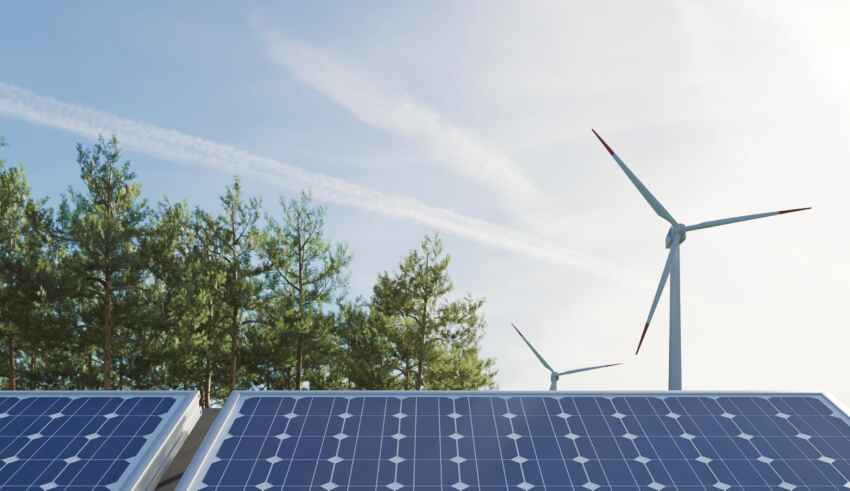
In the light of increasing dangers of climate change and quest for energy sovereignty among nations, Germany gives a leading example in the field of fair energy transformation via its Energiewende initiatives. This term “Energiewende,” was coined by the Öko-Institut in 1980 in the publication that constitutes of Germany’s bold energy turnaround. Accordingly, this movement shifts strategy from nuclear and coal-based energy to renewables such as solar or wind power intending to make them a top source of energy in West Germany.
Energiewende at the core was focused on reducing Green House emissions by 55% of the initial levels of pollution in 1990 and shutting down all nuclear power stations after the incident that occurred at Fukushima. The goal of this clean self-sufficiency is to promote scaling-up in wind, solar and other renewable sources to ensure that communities benefit by achieving greener climate in Germany.
In 2010 there was a sweeping national transition from nuclear and fossil sources to sustainable sources for a low carbon society. This provides useful lessons for other countries trying to decarbonise their economy while strengthening their supplies. In total, renewable already generates more than 40 per cent of German’s power supply, which makes Energiewende one of the most far-reaching modern change programmes in all industrialised countries.
The German government has outlined two key objectives that has to be achieved by 2050, the first is, renewable dominance, where coal and nuclear energy will be substituted by renewable energy which will make up for 60% of primary energy utilization and 80% of the overall electric power generation output in 2050. The second is energy efficiency, were energy efficiency enhancement production by 2.1% Germany aims at significant decrease of 50% from the primary energy use from 2008 till 2050.
With these objectives Germany has shown a solid resolve towards cutting greenhouse gases and reduction of fossil fuel dependence through heavy investment on renewable technology, a case of wind, solar, and biomass.
There are some significant economic benefits that have emerged through Energiewigende despite its ecological implication. Energiewende provides one of the most critical economic benefits associated with establishing a vibrant renewable energy sector. Renewable technologies have become popular due to the high demand that has led to significant development in investment, employment, and start-ups in the renewable energy value chain. This leads Germany towards abandoning nuclear as well as the fossil-based energy generation and also toward a green economic transition. Also, it has helped the society with the inclusion of community involvement and distributed generation for people to feel more responsible towards the environment.
The German renewable energy’s boost has also been enriched by engineering excellence introducing new ways of generating solar and wind power. The growth of clean sources of power is accompanied by sophistication of HVDC smart grids which channel these surges effectively while the integration of intermittent solar and wind forces is achieved by advanced storage systems making use of Electric vehicles, Home Batteries and conversed hydro plants. Efficiency will also be optimized by digitization for real-time demand optimization; supercomputing climate modelling for infrastructure resilience and ai-assisted predictive maintenance.
However, Energiewende has already presented an example of environmentally friendly economies in which reduction of greenhouse gas emissions has been ensured, supplies have been secured, and a significant number of new jobs were created that have helped sustainably grow German economy to the world’s lowest green Fundamentally, democratic consensus on a fundamental life-threatening climatic hazard translates into the obligation and benefits of a fair clean energy transition. Thus, Germany elucidates that the assurance of a common future surpasses carbonized inertia. The country’s grassroots energy revolution can be referred to as the living example of sustainable development an instructing model that other aspiring states wish to apply so as to successfully attain rapid wind-and-solar deployment since this is what is the current state.
In conclusion, Germany’s Energiewende can be seen as a role model for other countries which are faced with the issue of finding sustainable ways of producing energy in time. The story behind its success serves as a call to other world’s states to do so, with regards it takes everyone to defend the environment. Like what Germany has embarked on through Energiewende, transformational steps in the way should begin with renewable and resilient energy landscape.
By The European Institute for International Law and International Relations
References
Germany’s Energiewende. Energiewende – World Nuclear Association. (2020, July). https://world-nuclear.org/information-library/energy-and-the-environment/energiewende.aspx
Renewable energy in Germany: Energiewende. Centre For Public Impact (CPI). (2016, April 1). https://www.centreforpublicimpact.org/case-study/renewable-energy-germany















